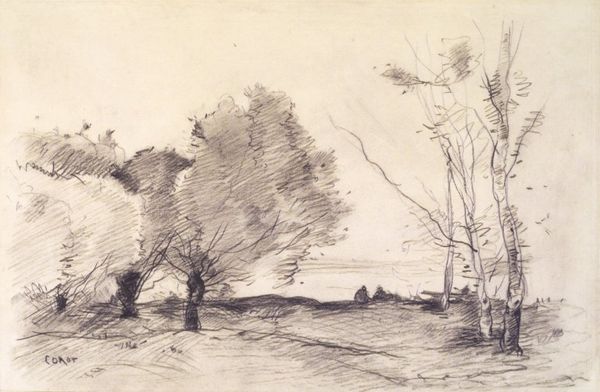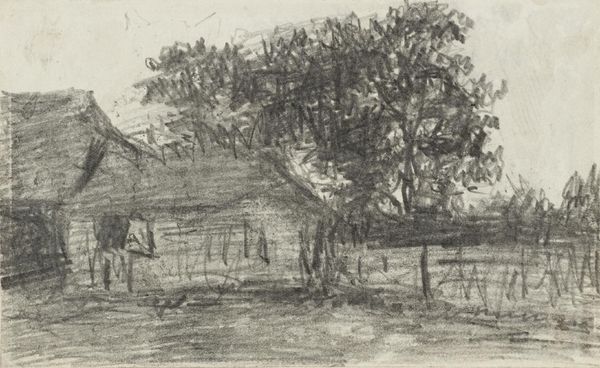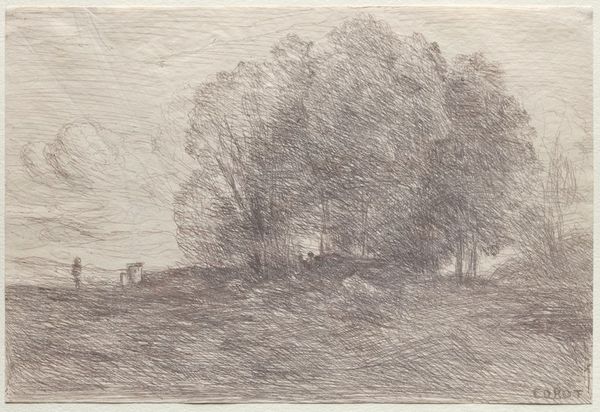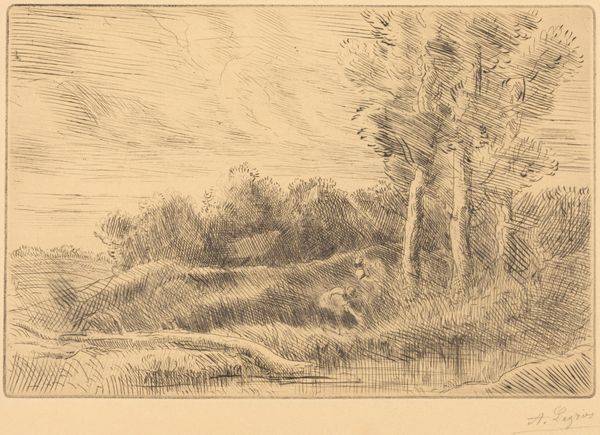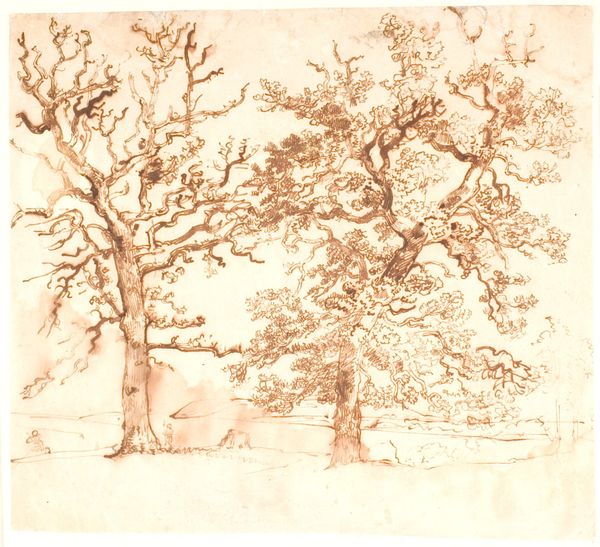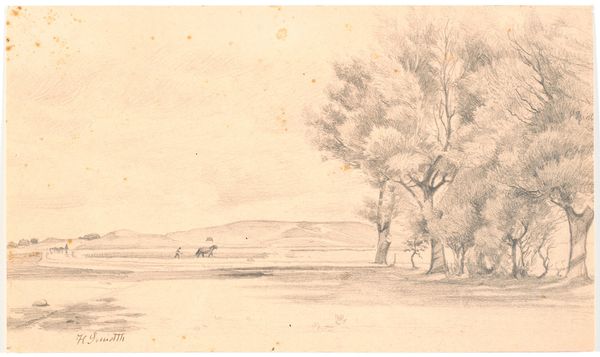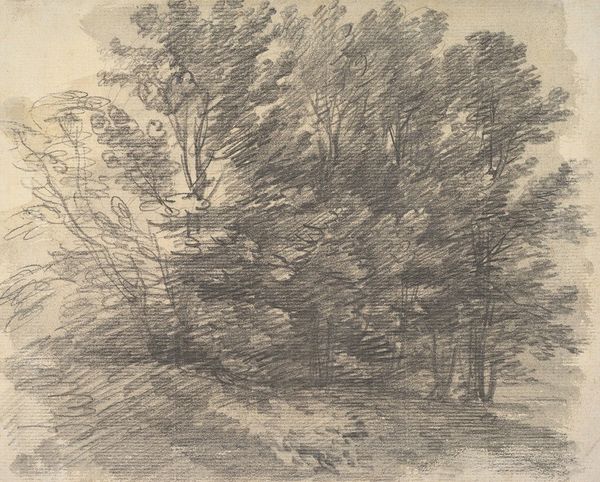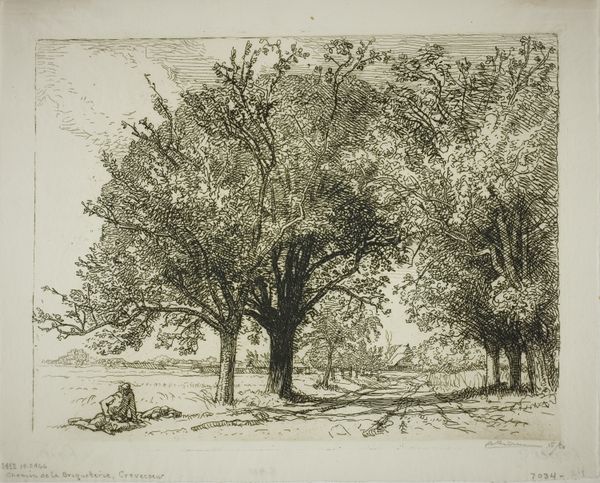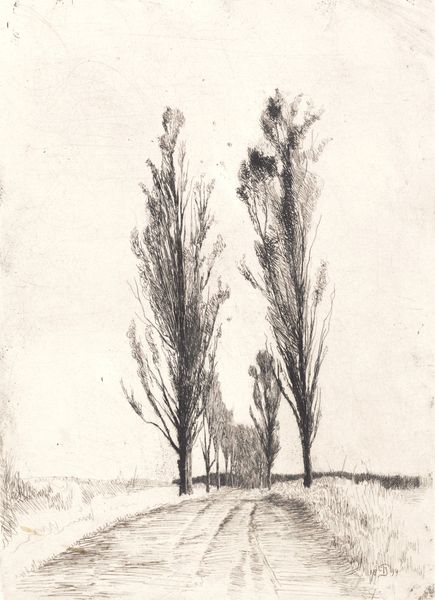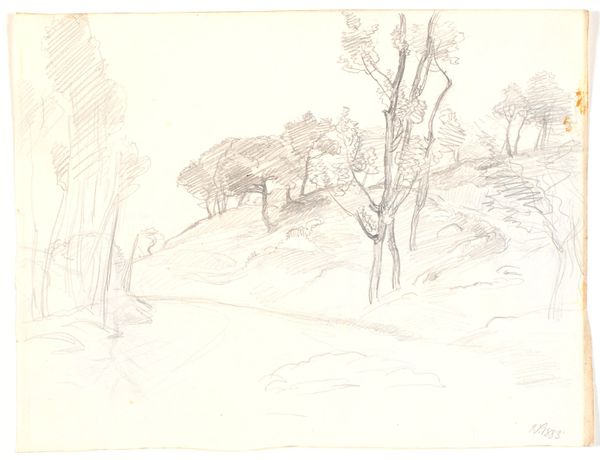
drawing, plein-air, dry-media, pencil
#
drawing
#
impressionism
#
plein-air
#
landscape
#
etching
#
form
#
dry-media
#
pencil
#
line
Copyright: Public Domain: Artvee
Editor: Here we have Camille Corot's "Willows and Poplars" from 1871, a pencil drawing showcasing a serene landscape. I'm struck by how the loose lines create a sense of movement, almost like the wind is gently rustling the leaves. What can you tell me about this piece? Curator: Well, I notice immediately the economic use of materials here. Pencil, easily transportable, allows Corot to capture the immediacy of the landscape *en plein air*. This is no academic exercise, meticulously planned. It's about direct engagement with the scene, about capturing a moment, mediated through the simplest, most accessible means of production. How do you think this material accessibility influenced the style itself? Editor: That's interesting, I hadn't considered the choice of materials as directly impacting the style. Perhaps the fleeting nature of the pencil marks mirrors the transient quality of the light and atmosphere he was trying to capture? It also feels almost like a sketch or study for a larger painting. Curator: Exactly. The presumed “roughness” challenges the hierarchy between drawing and painting, between sketch and finished work. Furthermore, it challenges the social hierarchy. Plein air sketches democratized artmaking, bringing art outside of the studio, away from wealthy patrons, and into the lived experience of the everyday. What are your thoughts about that? Editor: I see what you mean! It becomes less about depicting an idealized landscape and more about participating in one. And I guess the reproducibility of pencil sketches allows wider accessibility to art. It's no longer confined to the wealthy elite. I had not thought about it like that, thanks. Curator: Precisely. Considering the social and economic factors behind art making helps us understand why artists choose specific materials and techniques. Editor: It completely reframes how I see this drawing. Thanks! Curator: Indeed. It's about acknowledging the material realities and social forces that shape artistic production, recognizing art as a product of labor and social context.
Comments
No comments
Be the first to comment and join the conversation on the ultimate creative platform.
